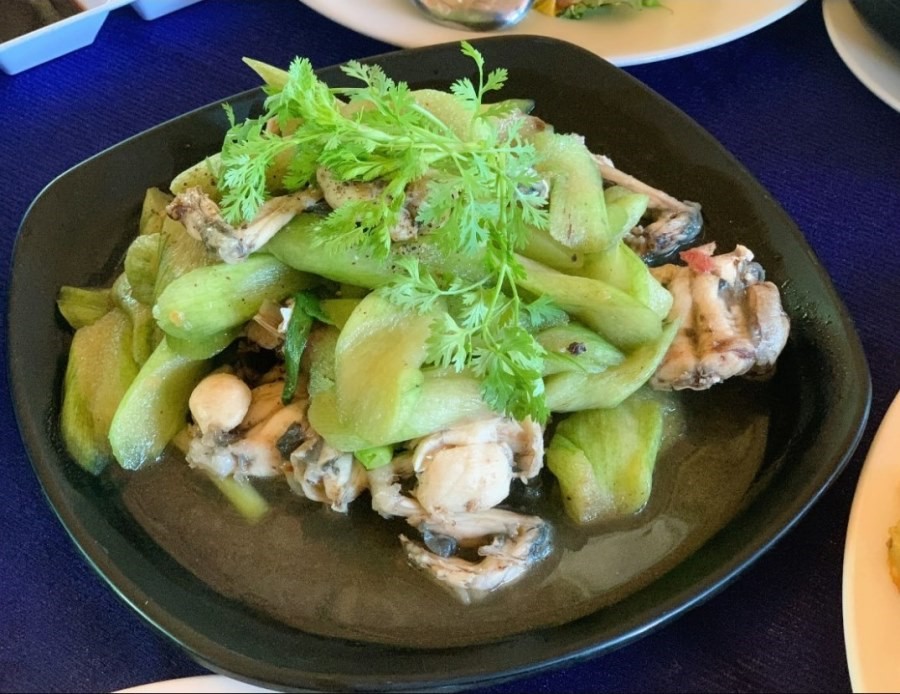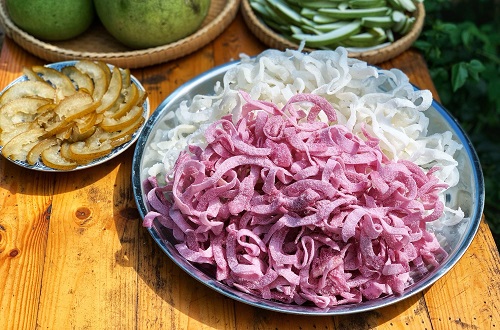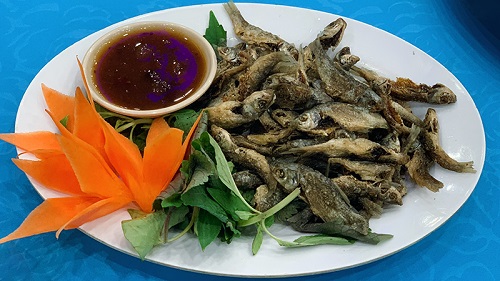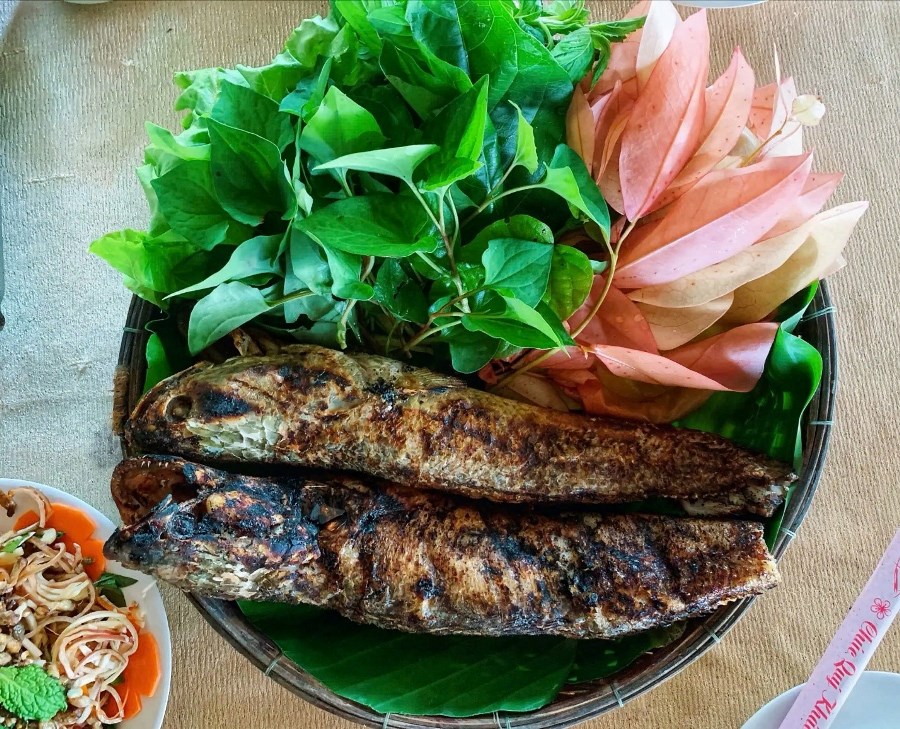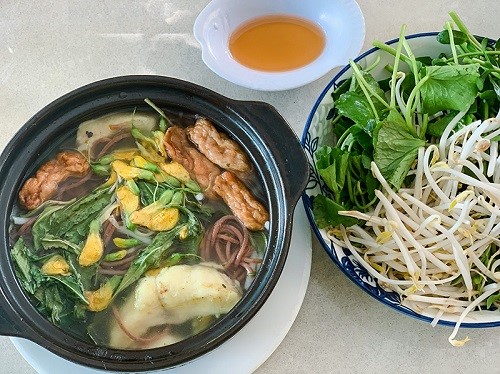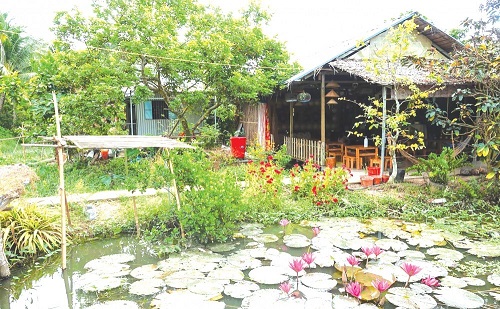
Imprints in communication
In everyday speech, impressive words about river life and culture are often used. For example, people in the Southwest say "Swimming" instead of "walking", because in the past, the road was not developed, people mainly traveled by canoe if it was a long distance, if going near, they often walked - before, the road surface was often flooded, so walking around on flooded roads was common. Similarly, when an acquaintance from afar comes to visit, whether traveling by car, train or plane, it is also said to be "diving" to visit. Also due to the imprint of the river, the word "boat bus" is used instead of passenger bus, evoking images of the back and forth boats in the past... Or the hitchhiking is also said to be "co giang" which is pronounced like the word "qua giang" to refer to refer to hitchhiking by boat in the past: “The "qua giang" (pronounced like "co giang") became common, it was easy to ask for a boat to cross the river, ask a strange boat to take you a long distance in a couple of days, hitchhikers are treated equally, food and water are the same as the boat owner, of course when the boat owner is tired, the hitchhiker will voluntarily do the rowing”(1),.
In the Southwest region, the mode of expression using images, activities and properties related to rivers and canals to compare or create metaphors and metonymy is quite common. In this case, it is necessary to find the similar association of two new and old objects to be able to realize the meaning of expression. This expression is based on visual thinking, so it is easy to recognize and often has expressive nuances. For example, instead of calling "brother-in-law", people in this area are used to saying "cot cheo brother". This expression conjures up a familiar image of a river: for means of moving, people in the plain use boats and canoes with two poles (two "cot") for rowing: one at the bow, one at the helm, and the image of two men standing to use pole for rowing is the basis for approach to become brothers-in-law in a family and the way to say "cot cheo brother" is to feel the closeness and sincerity.
There are many other interesting related stories. For example, going to a haircut, meeting an unskilled worker, the hair being cut often has uneven light and dark lines. Looking at the hair with dark and light lines, the people of the plains think of the "Sac ran" fish, a common fish with stripes, and say "the head is Sac ran". Or like anyone who lives in a water area without once or twice encountering or witnessing the scene of a boat sinking, the boat and everything in it being washed away by the flow. In social life, people use the word "Chim xuong" (boat sinking) to refer to covering up a certain negative incident that people want to hide, not let anybody know. Or a certain case should have been solved, but for negative reasons, the case handler deliberately delayed, refused to solve it, people called it "neo" (anchoring) or "ngam tom" (soak the shrimp). "Neo" Anchoring is using a heavy, edged, hooked object to drop to the bottom of the river or canal to keep the boat or canoe in its original position and not drift away. And "ngam tom" (soak the shrimp) is a form of keeping shrimp and fish underwater, with a cage dropped into rivers and canals, so that shrimp and fish can live like in the natural environment. "Neo", "ngam" is a positive behavior in life; and this way of saying the image is critical. And someone who talks a lot, or speaks fast, the people of the plain say "tep lan, tep loi" (swimming shrimp). This expression makes the listener have an impression of the quickness and agility in speech, and the praise and criticism depends on the expressive language...(2).
Imprints in religious activities and festivals
The custom of worshiping Ba Cau, worshiping Ca Ong, Tong On festival, Nghinh Ong festival... are activities bearing the imprint of the river.
Ba Cau in the folk mind is a deity who specializes in helping people who live by professions related to water when they have trouble. From this belief, commercial boats have the custom of setting up an altar to Ba Cau on the boat to burn incense and pray for peace, shrimp and fish are full of boat. The offering to Ba Cau is usually a pair of ducks with the belief that the duck will never sink and always overcome all obstacles in the river. From this custom of worshiping Ba Cau, many localities in the Southwest region organize the Tong On festival to pray peace for their families and neighbors, as well as for the whole village to have a full and prosperous life..
As for Ca Ong, people who live by the sea believe that they can save people from hurricanes and storms to safely return to shore. It is believed that, when going out to sea for catching, when a boat is about to sink, they call out for Ca Ong and he immediately comes to the rescue. Every year, the coastal fishermen in the West hold the Nghinh Ong festival. “The ceremony of worshiping the Ca Ong usually consists of 3 stages: Nghinh Ong ceremony, Tien Hien and Hau Hien worshiping ceremony, Chanh te ceremony, then the entertainment and eating stage. The scene in Ong's tomb during the festival is celebrated very brightly and dignified. The houses in the boat are all decorated with flowers, hanging lanterns, many people display incense burners, cakes, fruits and sticky rice dish in front of the house. The boats that day were parked at the wharf, did not go out to sea to do business” (3). It can be said that the annual Nghinh Ong festival of fishermen in the Southwest Sea is an expression of the morality of gratitude, to give thanks to the Ca Ong for helping them to be at peace on the way to their livelihood. And “The Nghinh Ông festival is an opportunity to satisfy the need for gratitude. The realistic core of the custom of worshiping the Ca Ong and the organization of the annual festival of coastal residents is probably also there" (4).
Imprints in folk art
In the past, on the rivers and canals in the Southwest region, at night, the voices of rowers, merchants, girls carrying flowers to the market, guys casting fist nets could be heard at night. The river environment is also a place to exchange, meet, ask questions, confess:
Song sau song bua lang co
Thuong em vi boi cau ho co duyen.
“Ho (Singing) has many different voices, Ben Tre voice, Rach Gia voice, Can Tho voice… With the same voice, each person sings differently, just like we recite poetry: when emphasizing here, when emphasizing another; sometimes affectionate, sometimes serious...So “Ho” is an art and people who know how to listen can guess the origin, sometimes share the singer's feelings” (5).
Ghe lui khoi ben con dam,
Nguoi thuong dau vang cho nam con day?
In short, rivers and canals in the Southwest not only play an important role in the material life, but also contribute to the formation of the personality, lifestyle, concept, and custom... of the Southwestern people..
HUYNH HA
--------------------
(1) Son Nam (1985), Mekong Delta features ancient life, Ho Chi Minh City Publishing House, p.38
(2) Huynh Cong Tin (2012), Cultural Impressions of the Southern Delta, National Political Publishing House - Truth, Hanoi, pp.35-38.
(3) Thach Phuong - Ho Le - Huynh Lua - Nguyen Quang Vinh (1992), Vietnamese folklore in the South, Social Sciences Publishing House, Hanoi, p.95.
(4) Thach Phuong - Ho Le - Huynh Lua - Nguyen Quang Vinh, Phone number, p.99.
(5) Nguyen Hien Le (2002), Seven days in Dong Thap Muoi, Culture and Information Publishing House, pp.88-89.
Source: Can Tho News - Translated by Hoang Dat







